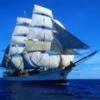-
Posts
173 -
Joined
-
Last visited
Reputation Activity
-
 JPZ66 reacted to DocBlake in Armed Virginia Sloop Patrick Henry by DocBlake - FINISHED - Lauck Street Shipyard - Scale = 1/32 - POF Admiralty Style
JPZ66 reacted to DocBlake in Armed Virginia Sloop Patrick Henry by DocBlake - FINISHED - Lauck Street Shipyard - Scale = 1/32 - POF Admiralty Style
New development! The Lauck Street Ship Yard has announced that they are going to begin to produce the POF Armed Virginia Sloop kit in 1/32 scale once again. The kit will be exactly the same as the kit in this build log, except the parts are laser cut rather than CNC cut. If anyone is interested in a fun but very challenging kit, this is it!
http://www.lauckstreetshipyard.com/avskit.htm
-
 JPZ66 reacted to DocBlake in Armed Virginia Sloop Patrick Henry by DocBlake - FINISHED - Lauck Street Shipyard - Scale = 1/32 - POF Admiralty Style
JPZ66 reacted to DocBlake in Armed Virginia Sloop Patrick Henry by DocBlake - FINISHED - Lauck Street Shipyard - Scale = 1/32 - POF Admiralty Style
Back from vacation with the family.
I started framing the main deck forward. I also built some wooden crates for the hold as cargo. I'm painting the metal bands on the powder kegs copper colored right now. They will go in the magazine. These little details won't be easily seen once the deck s framed in and partially planked, but they are fun to build, and I know they are there!
-
 JPZ66 reacted to ianmajor in HMS Unicorn by ianmajor - Corel - Scale 1:75, 1748 to 1771
JPZ66 reacted to ianmajor in HMS Unicorn by ianmajor - Corel - Scale 1:75, 1748 to 1771
The hub was cut off to leave a stub protruding from the rim. The hub was then turned down to 4mm diameter.
All the previous jobs on the wheel were done with standard lathe tools or tools that I hade previously produced. For this I needed a left handed, small boring tool which I had to grind up from a piece of 1/4 inch square tool steel. The boring bit had to be less than 3mm across and deep to avoid fouling the inside of the rim. The photo shows it in use - there is clearance angle between it and the work (honest!).
The chuck was tranferred back to the dividing head on the mill and 10 holes were drilled around the rim. On to the bench where the chuck was mounted on its back on a couple of pieces of wood with central holes. With the chuck secure the spokes were fitted. I only drilled holes in the hub for the odd numbered spokes which were then fitted. When the glue was reasonable dry I drilled the hub for the even spokes and fitted them. The reason for doing this was that all 10 holes drilled at the same time would have burst in to each other.
Back to the lathe for (in theory) the last time.
I used a parting tool to cut a deep recess in the pine wood behind the wheel. This gave clearance space for a left handed tool which I then used to face the rear of the wheel down to its intended width.
I then used the parting tool to expose the box wood core and to shape the drum around which the tiller rope will go. Finally I turned the rear pivot down to 1.5mm diameter and parted off.
It would have been easier to turn the drun in front of the wheel but......(a confession coming up)....when I drilled the holes around the rim I used a 1.5mm bit at full reach to be able to drill through the rim and in to the hub. The bit wandered horribly leaving the holes all over the show. Fortunately the felloes were wide enough for me to have a second go with the bit retracted in to the drilling chuck. This gave better results (still a bit of wander) but the hub in front of the wheel now had holes in it which meant that part was no use for the drum.
I examined the bit afterwards and found it was very slightly bent - not enough to be visible to the naked eye.
The resultant wheel following cleaning up alongside the Corel wheel.
Finally the Coral supports were used to see how it looked on the quarter deck. It is positioned in front of the mizen mast as per the kit instructions. I will make a new set of supports which will not be as wide as the Coral ones.
I am contemplating fitting wheel behind the mizen mast along with a tiller above the quarter deck (as per the Lymm plans). To do this would mean:-
1) removing the toplight(?) and shot holder
2) move the 4 canon forward to the next ports
3) modifying the centre of the flag lockers to take the tiller.
Hum....I wonder.
If any one is interested I will tidy up my scrap diagrams that I worked from and will publish them here.
-
 JPZ66 reacted to ianmajor in HMS Unicorn by ianmajor - Corel - Scale 1:75, 1748 to 1771
JPZ66 reacted to ianmajor in HMS Unicorn by ianmajor - Corel - Scale 1:75, 1748 to 1771
To assemble wheel and hub I made a sacrificial jig out of some scrap pine. This was turned to about 20mm diameter. It will remain undisturbed in the chuck until the wheel is complete. I transferred the chuck/jig to the dividing head on the milling machine to drill 10 holes around the jig which were highlighted with a pencil. This will indicate where the spokes will go in the rim.
For the rim I made 5 felloes which I glued in a ring on the end of the jig. I am fitting 2 spokes per felloe - similar to wooden road wheels. This is differnet to Dan's - he has 10 felloes with each having only one spoke.
Turning the outside of the rim was straightforward. For the inside I used a small boring tool - I had modified one of these for another job and it just squeezed in.
At this point I diverge from Dan's approach. He assembles and machines all the components on the surface of the jig. Then with careful use of solvent he detaches the completed wheel from the jig. Now his skills far outstrip mine and I could see my wheel ending up as a pile of bits as a result!
My solution was to turn the completed wheel off the jig. However to keep the wheel under control whilst doing this I extend the hub deep in to the jig.
My first move was to end drill a 5mm hole deep in to the jig.
The chuck containing the jig was moved to the tailstock. A piece of square section boxwood was held in the 4 jaw chuck and turned down to 5mm diameter. Glue was applied to it and the tailstock used to push this dowel squarely in to the jig. The pencil marks show how far in the dowel has gone.
-
 JPZ66 reacted to ianmajor in HMS Unicorn by ianmajor - Corel - Scale 1:75, 1748 to 1771
JPZ66 reacted to ianmajor in HMS Unicorn by ianmajor - Corel - Scale 1:75, 1748 to 1771
Hum, I notice again that it is more than two months since I last updated my ramblings. As (Landlubber)Mike put it in his log "life just got in the way of things". I had an unexpected week in hospital and will have more visits in the new year when the medics expect to remove a bit or two of me. I think I am starting to emulate the Cheshire Cat in Alice's Adventures in Wonderland by "slowly disappearing until all that was left was his grin". Sadly a disembodied grin would not be much use as a model maker!
Anyway enough of this rubbish....
I had decided the belfry that I had made was too small so I have generated dimensions for a larger version. I was in the middle of milling the new belfry cap when I was so rudely interupted. Returning to it a few weeks later was not satisfactory so I abandoned it for now. As a change I decided to produce a replacement ship's wheel.
The Corel wheel looks like it would be more at home in a modern cabin cruiser than on a 18th C ship. It has 8 spokes - I decided on one with 10.
I based my efforts on Dan Vadas' version in his Vulture log (here) though since mine is approximately half the size of Dan's I went for a slightly different approach.
Bye the bye, as I approached the end of making this wheel I also noticed that wheel production is flavour of the month on MSW. Some excellent examples are in EdT's Young America log (scale 1:72) (here) and Alexandru's (guraus) Victory log (scale 1:48) (here) . The latter is a double wheel. The above aproaches are different to each other and to mine!
The first things I produced were the spokes from some square section box wood.
To stop the wood flexing away from the tool I produced a simple back rest from 6mm steel rod. This was end drilled deeply with a 1.1mm bit. It was then filed or milled to half its width to expose the hole and debured with a small round file.
The back stop was mounted in the tail stock with its flat surface vertical. The end 2mm of the work piece was turned down to 1.1mm which was then supported. The work piece was turned down to 1.1mm for 12mm and the backstop advanced to support this. The piece could then be turned down to 1mm diameter.
To detail the spoke I rotated the backstop so that the flat surface was now horizontal. Detailing was done with a small triangular file. The photo shows holding the file in place. The chuck is not rotating because I have my hand forward of the work for photographic purposes. I actually approach from over the tail stock to keep my hand well away from the spinning chuck.
The next photo shows the spoke ready for sawing off. There are some marks on the backstop that I made to act as a guide for detailing. I made more spokes than are needed to allow selection of the best ones.
-
 JPZ66 reacted to ianmajor in HMS Unicorn by ianmajor - Corel - Scale 1:75, 1748 to 1771
JPZ66 reacted to ianmajor in HMS Unicorn by ianmajor - Corel - Scale 1:75, 1748 to 1771
The chuck with the wooden barrel then had its turn on the mill being attacked by the new cutter.
This produced some nice clean slots.
The whelp blanks were cut slightly over lenth and were the glued in to the slots. Triangular pieces of 1.5mm thick walnet sheet were glued in between. The resulting structure being very strong.
Back to the lathe to turn the whelps down to 13.5mm (their maximum diameter). The ends of the whelps were faced down to make them square and the correct length.
The top slide was set over to 7 degrees to turn the taper on the lower part of the whelps. It was then set over to 10 degrees to turn the taper on the upper part of the whelps. The part of the central barrel that extends above the whelps was turned down to 3mm diameter.
I piece of boxwood was cut for the head with a 3mm hole drilled in the centre. This was glued on to the top of the whelps.
When the glue was set the head was turned down so that its diameter was slighter more than the final size. The idea being that if there was any minor splintering when cutting the slots then turning the head down to its final size would (hopefully) get rid of any damage. The head was faced down to a thickness of 2.6mm.
The whole lot was transferred back to the mill where 10 radial slots were cut. I made another cutter 1.6mm thick. I could have machined the first one down to size - however if I had made a mess and had to start again........
The slots were cut to the full depth of 1.6mm. If I had been doing a proper job I would have cut them half depth, then cut corresponding half depth slots in the cap. I was not sure I would be able to get the two halves to match well enough.
Back to the lathe......
Another piece of boxwood was cut and glued on to the top of the capstan. I have a "pusher" that I made some time ago which is square faced and normally used to push rail wheels squarely on to their axles. In this case I put it in the tailstock to push squarely against the capstan cap whilst the glue dried overnight.
Finally I turned the cap to size then turned the barrel below the whelps to 3mm diameter to fit a hole in the quarter deck.
The next photo shows the almost completed capstan. The barrel has remained undisturbed in the chuck from the start to ensure concentricity.
At long last it was fitted to the quarter deck.
A final picture to compare it with the capstan on the Guadalope at the NMM. Perhaps the whelps should have been thinner. The taper of the whelps is correct but the thickness of the whelps makes the taper look shallow.
The least satisfactory parts are the bits made of wallnut between the whelps. Despite using varnish and gentle filling they still look a bit frilly.
I am contemplating fitting capston bars. I noted Dan Vadas only fitted five of the ten bars on his Vulture. His original intention was to fit them on the planked side of the ship. In the event he fitted them in alternate holes - which I think looks good. A project for another day.
-
 JPZ66 got a reaction from mattsayers148 in Alert by riverboat - FINISHED - Krick - 1/25th scale
JPZ66 got a reaction from mattsayers148 in Alert by riverboat - FINISHED - Krick - 1/25th scale
Frank,
That is an absolutely splendid job you're doing ! The weathering depth and tones, and attention to detail present a truly realistic appearance !
-Joe
-
 JPZ66 got a reaction from mtaylor in Alert by riverboat - FINISHED - Krick - 1/25th scale
JPZ66 got a reaction from mtaylor in Alert by riverboat - FINISHED - Krick - 1/25th scale
Frank,
That is an absolutely splendid job you're doing ! The weathering depth and tones, and attention to detail present a truly realistic appearance !
-Joe
-
 JPZ66 got a reaction from Dimitris71 in Alert by riverboat - FINISHED - Krick - 1/25th scale
JPZ66 got a reaction from Dimitris71 in Alert by riverboat - FINISHED - Krick - 1/25th scale
Frank,
That is an absolutely splendid job you're doing ! The weathering depth and tones, and attention to detail present a truly realistic appearance !
-Joe
-
 JPZ66 got a reaction from riverboat in Alert by riverboat - FINISHED - Krick - 1/25th scale
JPZ66 got a reaction from riverboat in Alert by riverboat - FINISHED - Krick - 1/25th scale
Frank,
That is an absolutely splendid job you're doing ! The weathering depth and tones, and attention to detail present a truly realistic appearance !
-Joe
-
 JPZ66 got a reaction from dgbot in Alert by riverboat - FINISHED - Krick - 1/25th scale
JPZ66 got a reaction from dgbot in Alert by riverboat - FINISHED - Krick - 1/25th scale
Frank,
That is an absolutely splendid job you're doing ! The weathering depth and tones, and attention to detail present a truly realistic appearance !
-Joe
-
 JPZ66 got a reaction from Archi in Art of period shipbuilding
JPZ66 got a reaction from Archi in Art of period shipbuilding
Tadeusz,
Thank you so much for this continuing effort and wonderful posts ! All of it has been a fascinating view of ships and ship building. Very highly interesting !!
-Joe
-
 JPZ66 got a reaction from Bobstrake in Art of period shipbuilding
JPZ66 got a reaction from Bobstrake in Art of period shipbuilding
Tadeusz,
Thank you so much for this continuing effort and wonderful posts ! All of it has been a fascinating view of ships and ship building. Very highly interesting !!
-Joe
-
 JPZ66 got a reaction from dgbot in Art of period shipbuilding
JPZ66 got a reaction from dgbot in Art of period shipbuilding
Tadeusz,
Thank you so much for this continuing effort and wonderful posts ! All of it has been a fascinating view of ships and ship building. Very highly interesting !!
-Joe
-
 JPZ66 reacted to Blue Ensign in How Realistic Can One Make Sails?
JPZ66 reacted to Blue Ensign in How Realistic Can One Make Sails?
Silkspan or Modelspan as it seems to be called now is an excellent medium for making sails certainly at smaller scales.
I used it on my French Seventy-four build, and the effect of wind behind the sail is simply achieved using a hair dryer.
There is a technique to forming the sails but all the various strengthening patches along with seams and cringles can be incorporated, and it is both strong and translucent.
B.E.
-
 JPZ66 got a reaction from Senior ole salt in Art of period shipbuilding
JPZ66 got a reaction from Senior ole salt in Art of period shipbuilding
Tadeusz,
Thank you so much for this continuing effort and wonderful posts ! All of it has been a fascinating view of ships and ship building. Very highly interesting !!
-Joe
-
 JPZ66 got a reaction from avsjerome2003 in Art of period shipbuilding
JPZ66 got a reaction from avsjerome2003 in Art of period shipbuilding
Tadeusz,
Thank you so much for this continuing effort and wonderful posts ! All of it has been a fascinating view of ships and ship building. Very highly interesting !!
-Joe
-
 JPZ66 got a reaction from CaptainSteve in Art of period shipbuilding
JPZ66 got a reaction from CaptainSteve in Art of period shipbuilding
Tadeusz,
Thank you so much for this continuing effort and wonderful posts ! All of it has been a fascinating view of ships and ship building. Very highly interesting !!
-Joe
-
 JPZ66 got a reaction from Canute in Art of period shipbuilding
JPZ66 got a reaction from Canute in Art of period shipbuilding
Tadeusz,
Thank you so much for this continuing effort and wonderful posts ! All of it has been a fascinating view of ships and ship building. Very highly interesting !!
-Joe
-
 JPZ66 got a reaction from Tadeusz43 in Art of period shipbuilding
JPZ66 got a reaction from Tadeusz43 in Art of period shipbuilding
Tadeusz,
Thank you so much for this continuing effort and wonderful posts ! All of it has been a fascinating view of ships and ship building. Very highly interesting !!
-Joe
-
 JPZ66 got a reaction from Landrotten Highlander in Art of period shipbuilding
JPZ66 got a reaction from Landrotten Highlander in Art of period shipbuilding
Tadeusz,
Thank you so much for this continuing effort and wonderful posts ! All of it has been a fascinating view of ships and ship building. Very highly interesting !!
-Joe
-
 JPZ66 got a reaction from mtaylor in Art of period shipbuilding
JPZ66 got a reaction from mtaylor in Art of period shipbuilding
Tadeusz,
Thank you so much for this continuing effort and wonderful posts ! All of it has been a fascinating view of ships and ship building. Very highly interesting !!
-Joe
-
 JPZ66 reacted to Mark Pearse in 28' Ranger-type Yacht by Mark Pearse - FINISHED - 1:12
JPZ66 reacted to Mark Pearse in 28' Ranger-type Yacht by Mark Pearse - FINISHED - 1:12
The keel was glued up, roughly shaped & glued on. I'm leaving final shaping for later, but it's getting fairly close.
The transition at the front edge at the keelson needs to be done carefully & I don't want to rush that. It's quite difficult to get it straight & symmetrical as well.
thanks
-
 JPZ66 got a reaction from dgbot in Le Fleuron by Gaetan Bordeleau - FINISHED - 1:24
JPZ66 got a reaction from dgbot in Le Fleuron by Gaetan Bordeleau - FINISHED - 1:24
All I can say is; Wow, what a masterpiece ! To see what you have done with simple, ordinary trees......Amazing, master class artistry.
Bravo Gaetan, Bravo !!!
- Joe
-
 JPZ66 reacted to toms10 in USF CONSTELLATION by toms10 - FINISHED - Artesania Latina - scale 1:85 - first wooden build
JPZ66 reacted to toms10 in USF CONSTELLATION by toms10 - FINISHED - Artesania Latina - scale 1:85 - first wooden build
Here is a quick update. I have been tying clove hitches for the last century but all the lower ratlines for all 3 masts are complete including the reversed ones at the top. Those were a bit tricky because the shrouds needed to be kept tight but not pull the lower rats out of alignment. All in all they came out okay for a hacker. I started putting in the upper dead eyes for the middle set of ratlines so we can do it all again.












